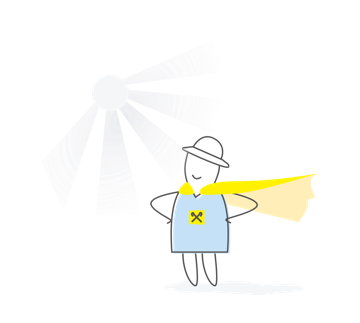Virtual trade fairs: joining the trend
The majority of entrepreneurs regard trade fairs, both international and local, as one of the most efficient marketing instruments for businesses. During this season, organization of trade fairs became a taboo, but some of them switched to the digital format and did take place, thus marking the future prospects. Experts tell us about virtual trade fairs and the rules of succeeding there.
Organization of trade fairs became subject to quarantine restrictions all over the world, so every country decided when to resume trade fairs depending on how they sustained the first wave of pandemic, Valerii Pekar, CEO Euroindex (a trade fair organization company), says. For example, fairs in certain provinces of China started in late May and in some states of Germany in early June. Presently, restrictions were lifted in such countries as Poland, the Netherlands and South Korea. In Ukraine, fairs resumed on 17 June, but the main business exhibition season kicks off in September.
Nevertheless, even though the majority of fairs slated for the period of quarantine were postponed, the forced worldwide isolation stimulated development of a new format: virtual, or online. “Any trade fair is, first of all, about communications: people meet each other and decide whether they will feel comfortable working with each other. This format of business communication will remain on the agenda for a long while,” Tetiana Fedorova, СЕО Premier Expo, believes. So, if the whole world is striving for omnipresent digitalization, trade fairs cannot stay on the sidelines of this trend.
Online trade fairs did exist even before the quarantine, but they were held in a format that was comprehensible neither for exhibitors nor for visitors. That’s because it was a product difficult to monetize, Tetiana Fedorova explains. And until recently, there were no quality platforms on which trade fairs could be organized, either.
Yevhenia Lytvynova, President of the Ukrainian Exporters Club, says that the majority of prestigious international trade fairs went online even before the quarantine imposed as a result of the coronavirus pandemic. And even though in the past, many Ukrainian entrepreneurs believed that without trips and personal meetings this instrument won’t work, her experience in working with export fairs in China proves that it does, and works very well. In virtual space, just like in the real one, visits and participation in trade fairs bring contacts, contracts, promotion and the necessary information.
Valerii Pekar thinks directly the opposite: “Virtual fairs have appeared in the early 2000s, during the “dotcom boom”. But they took root neither then, nor now. Because the essence of a trade fair is personal contact between manufacturer-supplier-customer and the ability to engage all senses, which an online version does not allow to do.” And although he believes that online fairs will not replace a regular, live format, he nevertheless admits that certain online activity will be found at a “live” fair as well, first of all, to establish contact with B2B buyers from countries whose representatives were unable to visit an offline fair. It means prearranged meetings with potential customers.
However, the largest and the most effective online fairs are presently held in China. For example, Canton Fair, the world’s largest Chinese export and import fair. By the way, the fair was held during the quarantine on an online platform that cost 2 million dollars to design. The platform, the hosting and streaming were paid for by the government. The Chinese are not desirous of receiving foreign delegations until the end of 2020, because social distancing is presently a priority there. Therefore, all entrepreneurs having interest in export or import of goods can try to sort out themselves the specifics of e-commence in China or use the services of an intermediary. Every exhibition and trading platform has own specifics and own requirements to trademarks and product presentations, and therefore, consultations from specialists won’t be unnecessary, at least in the beginning.
According to Yevhenia Lytvynova, permanent online fairs (trading platforms), short-term online platforms and VTPs (Virtual Trade Point, the seller’s webpage adapted for buyers in other countries) will continue to grow and enjoy popularity among businesses even after quarantines are lifted. And that means that Ukrainian manufacturers have a chance to present themselves in other markets and draw attention from business community.
Advice If you decide to participate in a trade fair in China, bear in mind that the Chinese are not in a hurry to make a contract with those who already have goods in a warehouse in China, even if they haven’t cleared customs yet. It provides a guarantee that any aggravation of epidemiological situation won’t provoke force majeure. But in general, Chinese entrepreneurs are interested in Ukrainian goods as they want to offer their visitors and customers diverse and interesting products. |
Formats of online trade fairs
Tetiana Fedorova named several formats of online trade fairs, which were held during the quarantine and will continue to grow in the nearest future.
Virtual fair: it looks like a virtual game with the depiction of stands, which you walk up to like in a virtual game, view them and, if desired, click on the manager figure, who must immediately come online via Zoom or using another instrument. An example of virtual fair is SkyForward, a fair of vacancies in Germany’s aerospace industry, which you can visit at: https://www.skyforward.de/de.
Marketplace fair is a catalogue of products offered by exhibitors. Its distinguishable feature vis-à-vis an online store is the quality classification of products in the catalogue. Thanks to built-in filters, the search of exhibitors becomes much faster. An example is the permanent Ukrainian footwear trade fair ExpoShoes online, where only Ukrainian manufacturers are presented: https://exposhoes.com.ua/.
Hybrid fair: it combines offline and online formats. In the online format, a visitor uses matchmaking (artificial intelligence matching the seller and the buyer together via product description and request for purchase) to determine whom they want to contact, and then goes to the actual stand to talk to the seller and “touch” the product. In the offline format, meetings take place in a virtual online room of the trade fair platform or via intra-platform messenger. An example is the aforementioned Canton Export and Import Fair: https://www.cantonfair.org.cn/en/.
Webinar fair features nonstop product presentations according to the schedule set in advance. Products may be divided into flows based on trends. An example is CosmoProf Bologna https://www.cosmoprof.com/en/.
The main advantage for participants of online fairs is the aforementioned quality matchmaking. According to Tetiana Fedorova, Assistant CEO Premier Expo Ukraine, her company also uses matchmaking, albeit with certain specifics. PremierExpo organizes such trade fairs as KyivBuild, Intertool Tech Service, ComAutoTrans, WorldFood Ukraine, InterCHARM and other. The selection takes place online, and people arrange offline or online meetings. Next comes a group of managers, who remind those who arranged a meeting about their meeting and make sure that the meeting does take place. This way, Tetiana is trying to get the participants of her fairs used to this technology. Tetiana Fedorova believes that no matter how good the quality of a platform or a format is, there is a number of segments, such as beauty, wedding fashion and partially medicine, for which the online format is unsuitable, because visitors come to these trade fairs to talk to the sellers, show off and try their products. There, emotions and kinesthetics rule the roost.
How to present yourself online the right way
Ukrainian entrepreneurs aren’t quite used to the virtual fair format yet, so preparation for these fairs causes a lot of questions. Here are several recommendations from experts.
- thoroughly describe your product
At a trade fair in Guangzhou, 98% of visitors didn’t go beyond the description of the participant’s first product. A conclusion that follows from it is this: select a hit/star product and make a bet on it when preparing content to make sure that visitors either contact you immediately or begin to look deeper into your product. When choosing a hit, the Pareto principle will come handy: select the product that generates the bulk of revenues.
- carefully complete the classifier, for the quality of matchmaking depends on that;
- one month before the trade fair, prepare and submit content to the provider (to leave time for preparation of promo materials);
- announce your participation (when, where and how to contact you at an online fair) to those whom you want to meet with;
Yevhenia Lytvynova stresses that special attention should be devoted to the product presentation form: you have to imagine it online in such a way that the customer gets the impression that they see it in reality. Not simply a bottle of wine but a video or an animation demonstrating how the wine is being poured into a glass or how a person sips it… Chinese fairs have implemented this approach on their platforms and even in Tik Tok. Yevhenia Lytvynova added several other important points to the aforementioned recommendations.
- place a QR code on materials to enable the customer to get directly to a manager;
- bear in mind the time difference and organize several shifts of managers on duty to be available 24 hours a day during the trade fair;
- don’t be lazy to estimate order price (our managers are often prone to that);
- provide exhaustive information, so that a customer who sees your product for the first time doesn’t have to guess whether your coffee is ground or in beans, because it is important for the customer to know not only that but also, for example, where this coffee comes from and where it was roasted.
Content for online fairs
- videos of several types: videos of production facility (internal processes), virtual launch (launch your product online), a lecture featuring a celebrity and your product, a master class on how to do something with your product better/faster, for example, to install laminate;
- texts about advantages and price offers for various links for the chain;
- good-quality photographs;
- VR technologies and solutions.















